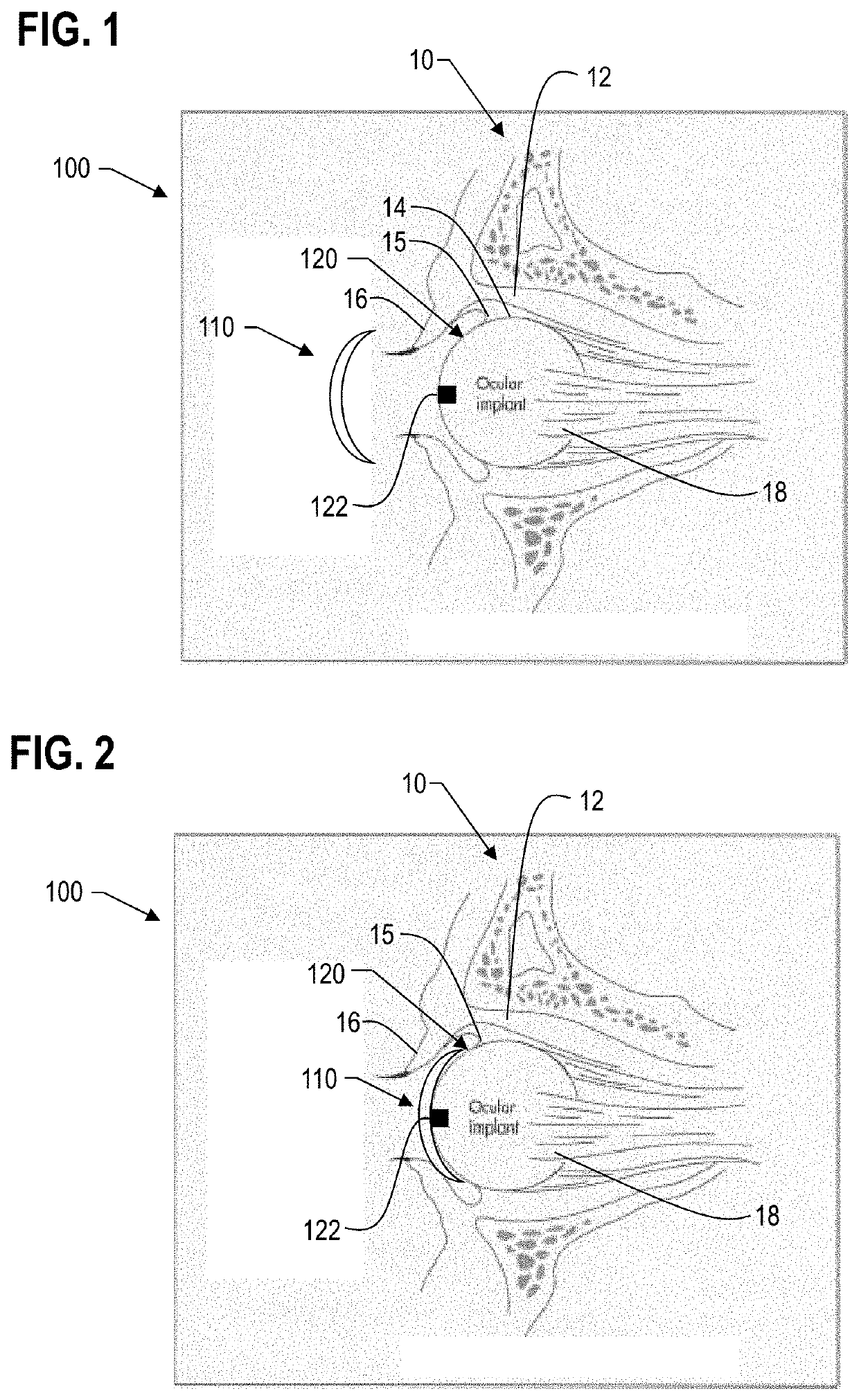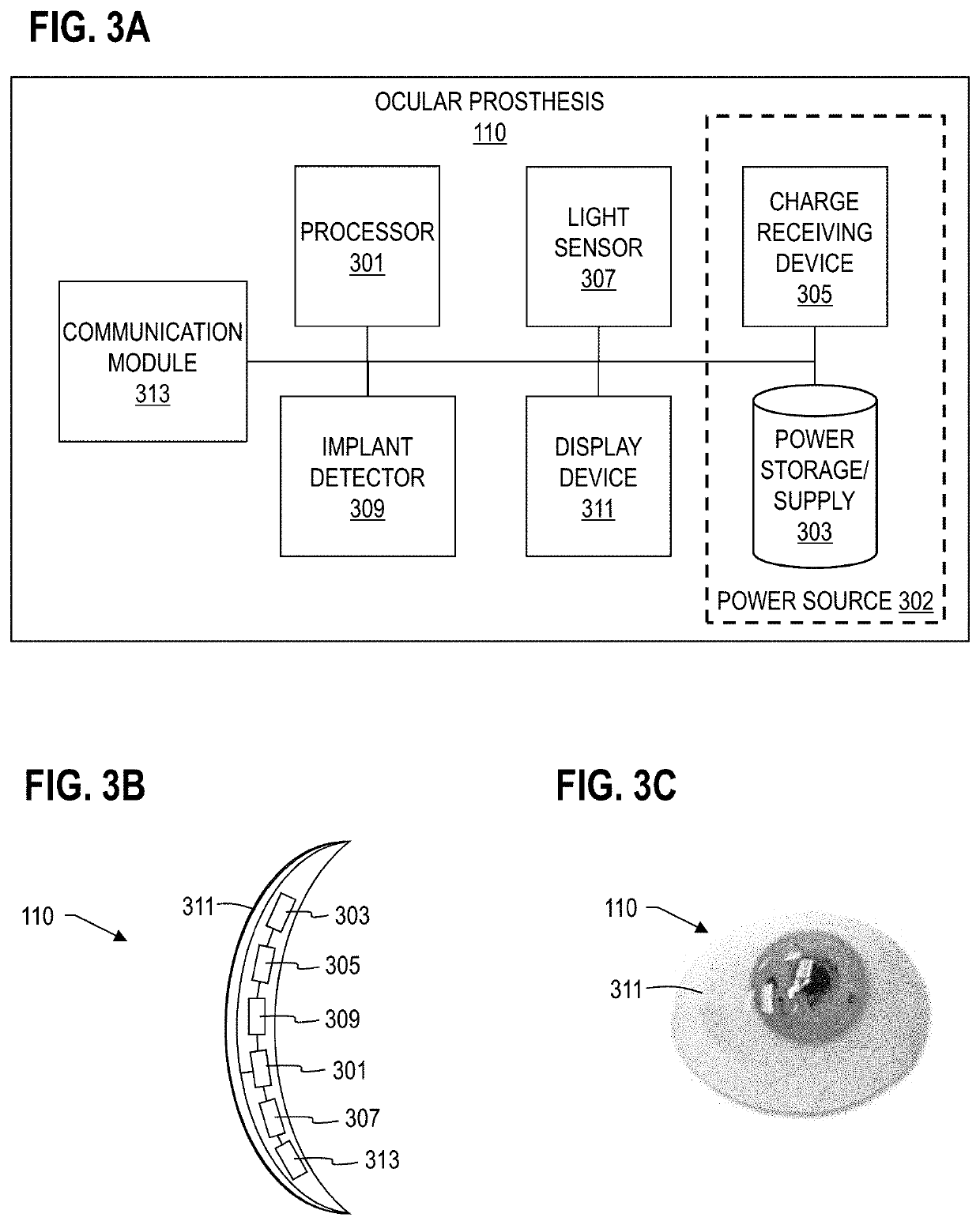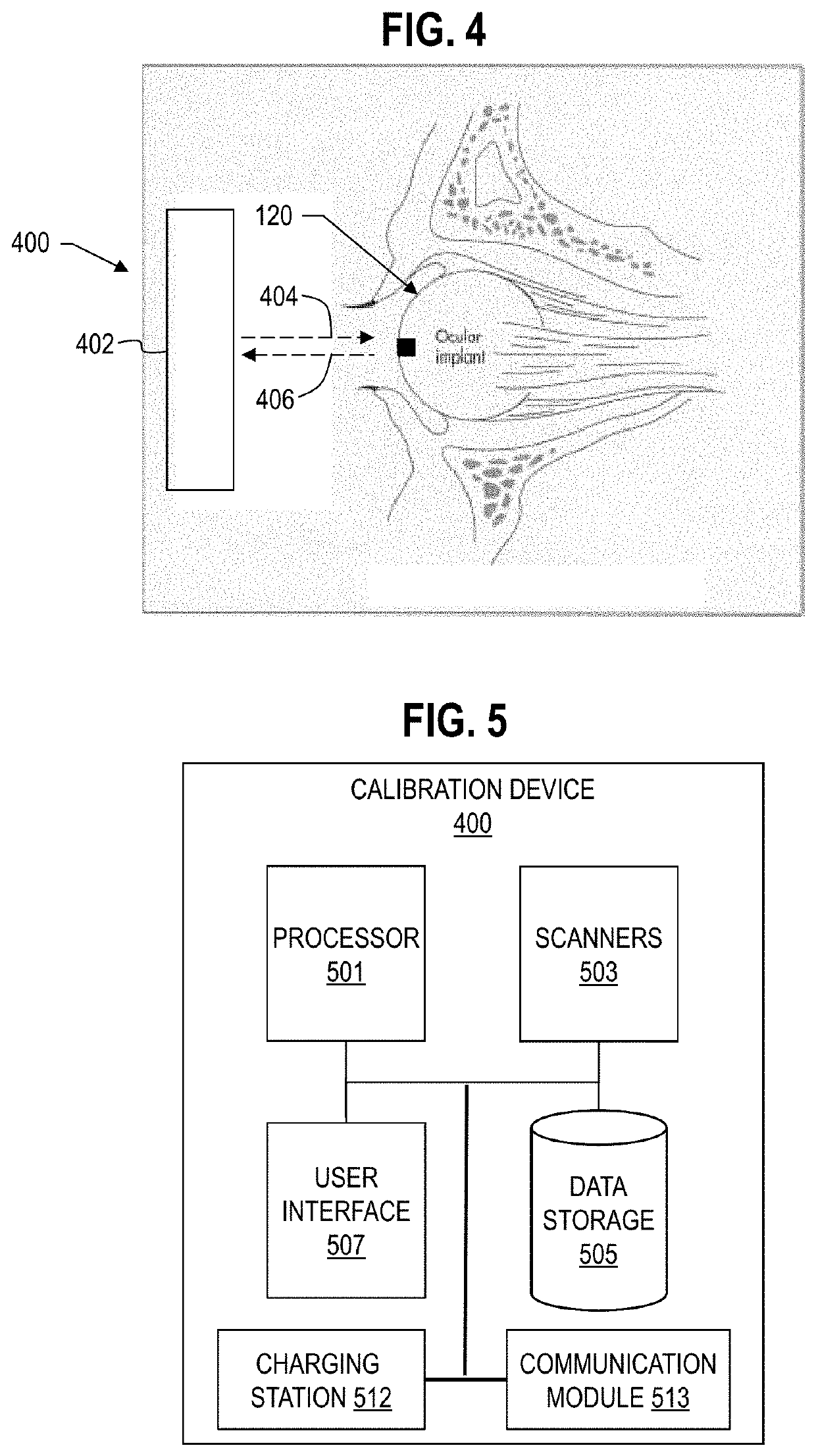Ocular prosthesis with display device
a display device and ocular prosthesis technology, applied in the field of ocular prosthesis with display device, can solve the problems of limited or no movement, insecurity of patients, and inability to appear realistic, and achieve the effect of normal motility
- Summary
- Abstract
- Description
- Claims
- Application Information
AI Technical Summary
Benefits of technology
Problems solved by technology
Method used
Image
Examples
Embodiment Construction
[0054]A method and apparatus are described for an ocular prosthesis with a display device. In the following description, for the purposes of explanation, numerous specific details are set forth in order to provide a thorough understanding of the present invention. It will be apparent, however, to one skilled in the art that the present invention may be practiced without these specific details. In other instances, well-known structures and devices are shown in block diagram form in order to avoid unnecessarily obscuring the present invention.
[0055]Some embodiments of the invention are described below in the context of a self-contained ocular prosthesis with an electronic display working in concert with a marker configured to move with an orbital implant. However, the invention is not limited to this context. In other embodiments some of the functions of the ocular prosthesis (such as power storage or data processing or ambient light detection or implant orientation detection or natur...
PUM
 Login to View More
Login to View More Abstract
Description
Claims
Application Information
 Login to View More
Login to View More - R&D
- Intellectual Property
- Life Sciences
- Materials
- Tech Scout
- Unparalleled Data Quality
- Higher Quality Content
- 60% Fewer Hallucinations
Browse by: Latest US Patents, China's latest patents, Technical Efficacy Thesaurus, Application Domain, Technology Topic, Popular Technical Reports.
© 2025 PatSnap. All rights reserved.Legal|Privacy policy|Modern Slavery Act Transparency Statement|Sitemap|About US| Contact US: help@patsnap.com



